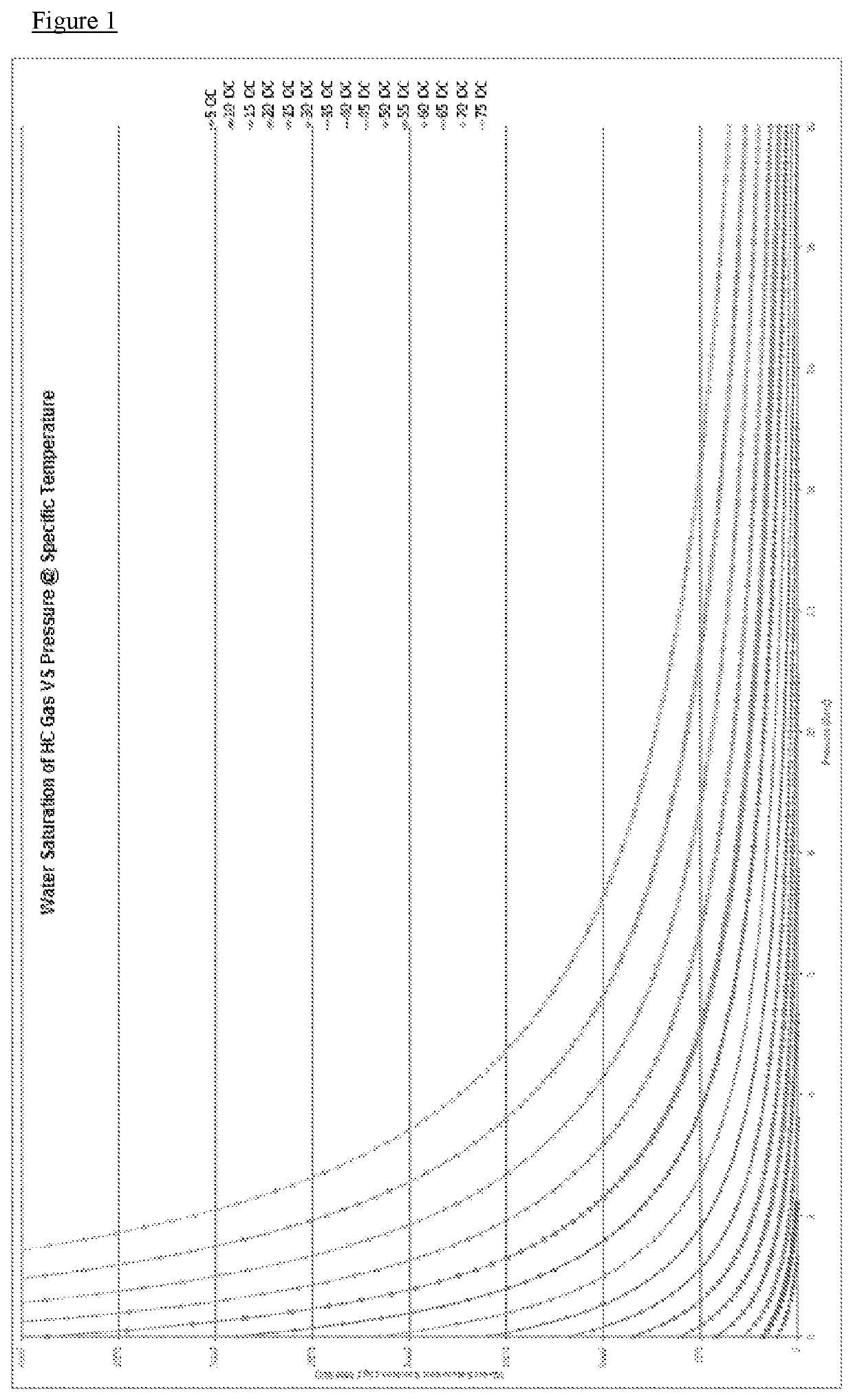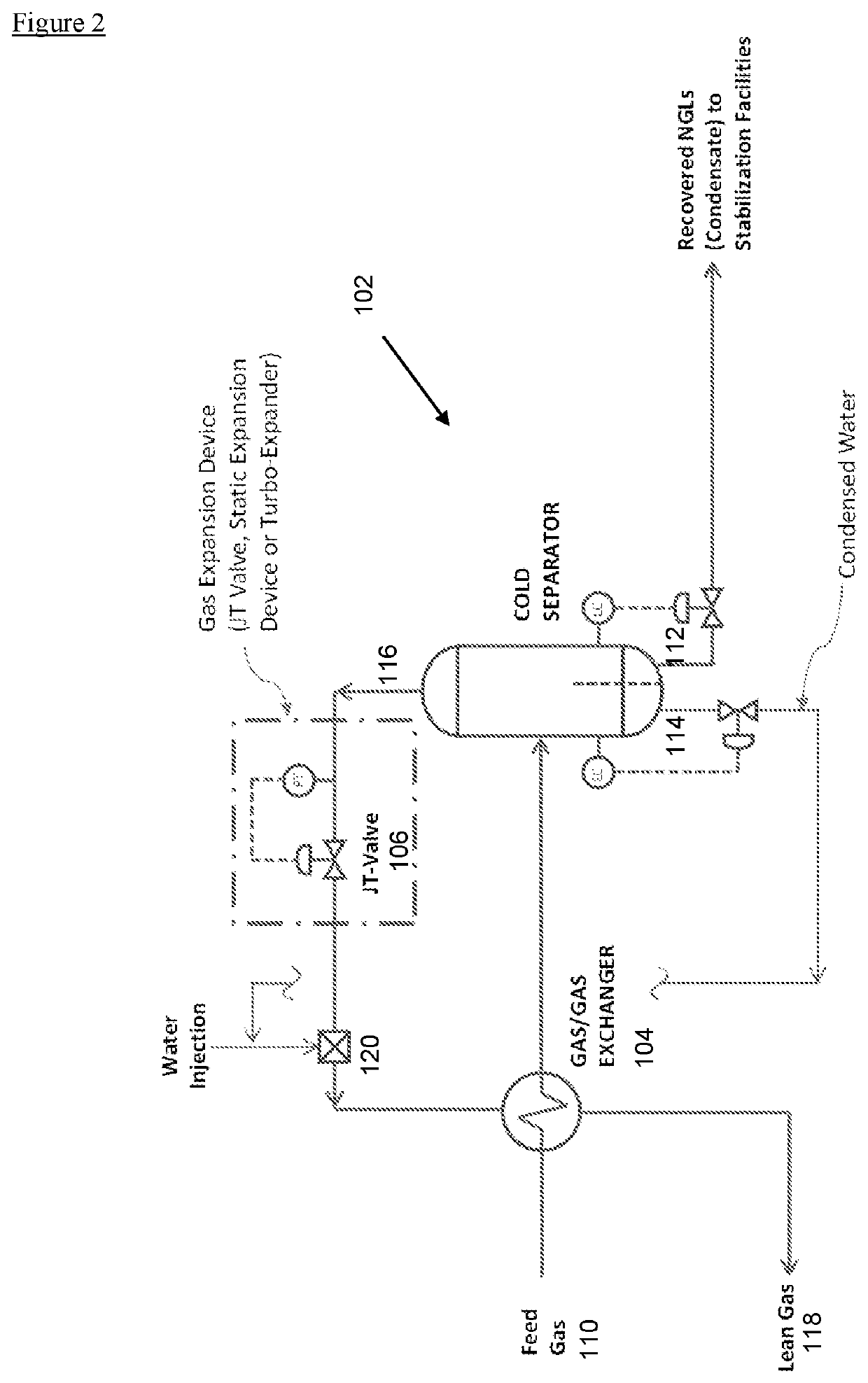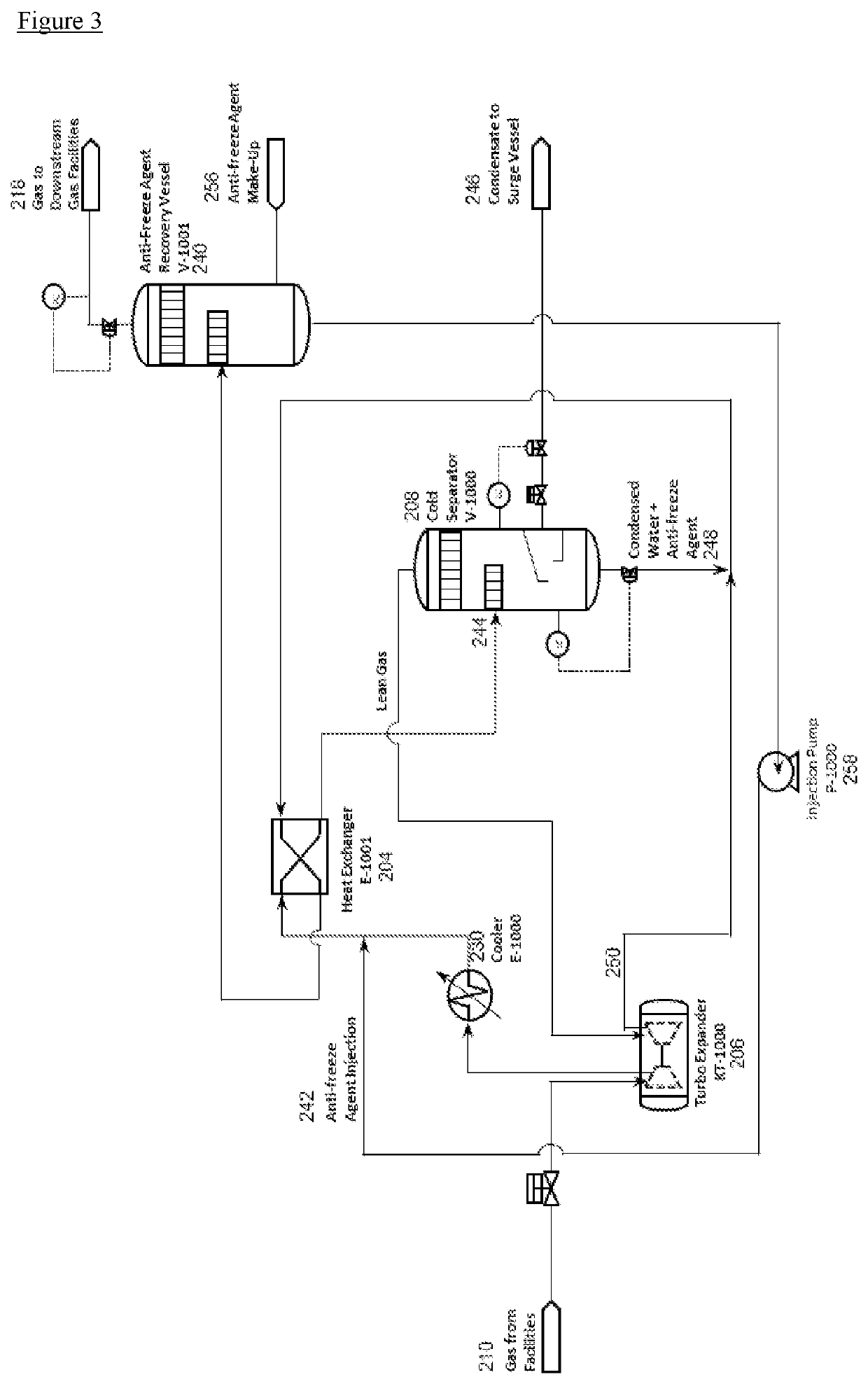System for recovering natural gas liquid from low pressure source at low temperatures
- Summary
- Abstract
- Description
- Claims
- Application Information
AI Technical Summary
Benefits of technology
Problems solved by technology
Method used
Image
Examples
Embodiment Construction
[0066]Hydrocarbon Dew Point Control (HCDPC) of low pressure gas uses the concept of evaporative cooling, coupled with a gas expansion device which may either be a JT Valve, Static Expansion Devices or a Turbo-Expander, to chill the gas stream to condense and remove the heavier hydrocarbon components (NGLs) from the natural gas stream.
[0067]Evaporative cooling is the addition of water vapor into gas that is water dew pointed, which causes lowering the temperature of the gas. The energy needed to evaporate the water is taken from the gas in the form of sensible heat, which reduces the temperature of the gas, and converted into latent heat, the energy present in the water vapor component of the gas, whilst the gas remains at a constant enthalpy value. This conversion of sensible heat to latent heat is known as an adiabatic process because it occurs at a constant enthalpy value. Evaporative cooling therefore causes a drop in the temperature of gas proportional to the sensible heat drop ...
PUM
 Login to View More
Login to View More Abstract
Description
Claims
Application Information
 Login to View More
Login to View More - R&D
- Intellectual Property
- Life Sciences
- Materials
- Tech Scout
- Unparalleled Data Quality
- Higher Quality Content
- 60% Fewer Hallucinations
Browse by: Latest US Patents, China's latest patents, Technical Efficacy Thesaurus, Application Domain, Technology Topic, Popular Technical Reports.
© 2025 PatSnap. All rights reserved.Legal|Privacy policy|Modern Slavery Act Transparency Statement|Sitemap|About US| Contact US: help@patsnap.com



